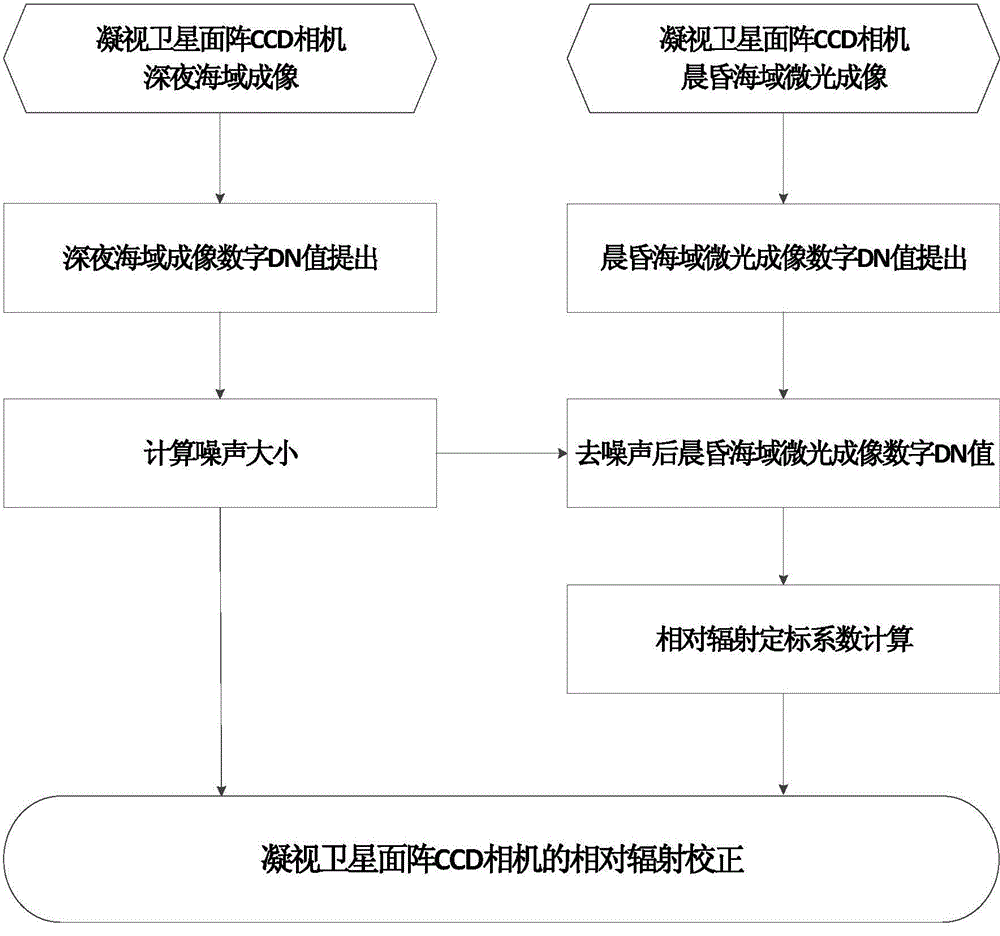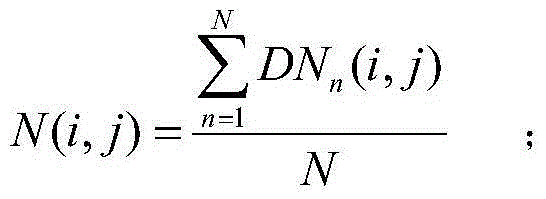Relative radiation correction method of staring satellite area array CCD camera
A technology of relative radiometric correction and relative radiometric calibration, applied in color TV parts, TV system parts, TVs, etc., can solve the problem of inconsistent responsivity, dark current noise, shot noise, readout noise, and quantization noise. Inconsistency, remote sensing image data distortion and other problems, to achieve the effect of improving accuracy, strong engineering application significance, and strong universality
- Summary
- Abstract
- Description
- Claims
- Application Information
AI Technical Summary
Problems solved by technology
Method used
Image
Examples
Embodiment Construction
[0031] (1) Establishment of the radiation response model of the probe: according to the imaging principle of the staring satellite area array CCD camera, fully considering the noise source of the imaging link, the radiation response model of the area array CCD camera probe is established;
[0032] DN(i,j)={f[L(i,j)]+N DC (i,j)+N S (i,j)+N R (i,j)}×G+N Q (i,j) ①
[0033] In the formula: i, j are the detector positions of the area array CCD camera (i∈[1,K], j∈[1,L]);
[0034] DN(i,j) is the digital DN value of detector (i,j);
[0035] f[L(i,j)] is the radiance L(i,j) function received by the detector (i,j);
[0036] N DC (i, j) is the dark current noise of probe (i, j);
[0037] N S (i, j) is the shot noise of probe (i, j);
[0038] N R (i, j) is the readout noise of probe (i, j);
[0039] G is the integrated gain of circuit output;
[0040] N Q (i, j) is the quantization noise of detector (i, j).
[0041] Simplify ① into ②:
[0042] DN(i,j)=f G [L(i,j)]+N(i,j)② ...
PUM
 Login to View More
Login to View More Abstract
Description
Claims
Application Information
 Login to View More
Login to View More - R&D
- Intellectual Property
- Life Sciences
- Materials
- Tech Scout
- Unparalleled Data Quality
- Higher Quality Content
- 60% Fewer Hallucinations
Browse by: Latest US Patents, China's latest patents, Technical Efficacy Thesaurus, Application Domain, Technology Topic, Popular Technical Reports.
© 2025 PatSnap. All rights reserved.Legal|Privacy policy|Modern Slavery Act Transparency Statement|Sitemap|About US| Contact US: help@patsnap.com



